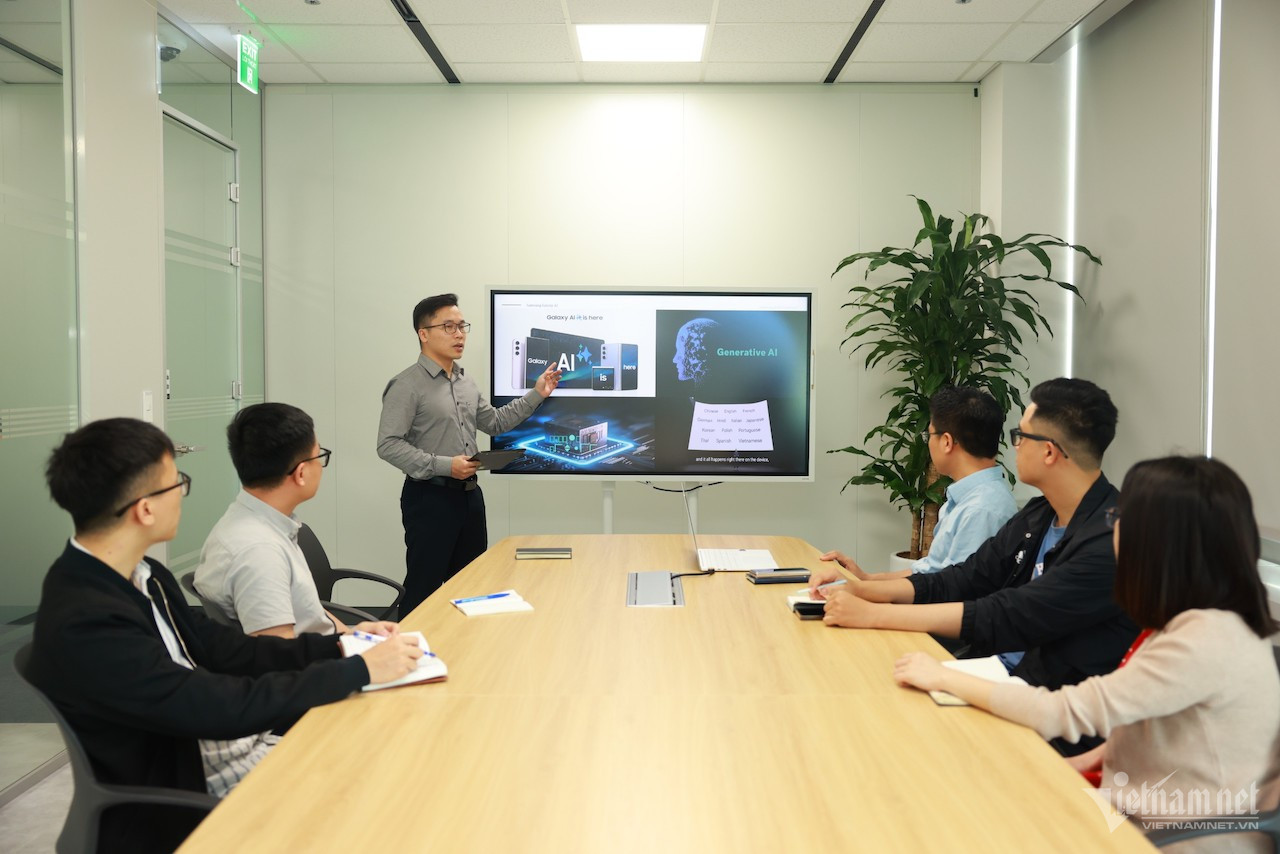
At a meeting with Minister of Information and Communications Nguyen Manh Hung on April 4, Samsung Vietnam CEO Choi Joo Ho revealed that Galaxy S24 has for the first time integrated AI features researched and developed by Vietnamese engineers.
One week later, VietNamNet met with the team of Vietnamese engineers. Tran Tuan Minh, the engineer leading the Language AI team from Samsung R&D Vietnam Center (SRV), said in October 2023, Samsung’s leaders decided to add the Vietnamese language to Galaxy AI, the 13th language after others such as English, Chinese, French and Korean.
“I felt extremely proud when I could develop Vietnamese language, my mother tongue, on the most modern smartphone model,” Minh said.
Later, the engineers of the AI (artificial intelligence) R&D (research and development) team were sent to South Korea and India to study in AI model architecture, algorithms for AI, and data and training for AI. The AI testing division then came to Vietnam to share knowledge about AI, testing methods, and test supporting tools and testing experiences.
Well prepared for the project, the research team still faced difficulties. To develop high-quality AI, having a large amount and diverse and controlled data is a prerequisite. Meanwhile, data volume about the Vietnamese language is small compared with other more widely used languages.
“This was the biggest difficulty we faced,” Hung recalled. “In addition to difficult grammar structures, we also had to face other problems, including regional languages with different accents, slang words, synonyms, borrowed words and new words used by Gen Z."
To solve the problem, SRV had to use hundreds of people to process data for AI. The engineers had to create data for AI training, and help AI understand and give accurate output answers. The data sources must be legal.
Thanks to large resources mobilized for the project, just within a short time, the Vietnamese engineers edited existing data and created new data for the AI training.
Minh revealed that to perfect AI, his team had to record millions of files of male and female voices for the Galaxy S24 Series.
Regarding testing, to ensure accurate interpretation and voice recognition in different noise environments, Minh and his teammates not only had to test the AI in the lab, but also had to visit different places, including Hoan Kiem Lake, shopping malls and cafes to be sure that the AI worked properly.
“With unceasing efforts, just within four months, SRV engineers mastered the technology and perfected the AI feature for Vietnamese language for the S24 model,” Minh said.
AI was applied for identifying voices and converting voices into text. The Galaxy AI device identifies the language the user is using through its automatic voice recognition tool, and after that, the voice content (Speech) is converted to text.
In addition, AI can be used to convert text to voice. The input is text (translated), while the output is sounds read out from that text.
Vietnamese engineers also developed many smart features in the photo editing software (Photo Editor), such as moving objects to other places on the photo. The device can analyze, erase and re-place objects in photos, and re-create missing parts after erasing the objects.
In image enlargement, the device recreates images when resizing and aligns the layout, while the missing background parts are filled perfectly, and even the content goes beyond the borders of the image origin, helping expand the display area of the image.
It can also increase image resolution without affecting image quality.
Do Duc Dung from SRV said the Galaxy AI is not the first project undertaken by Vietnamese engineers, which shows the development of Samsung’s R&D division.
Every year, SRV receives technologies transferred by other Samsung R&D centers all over the globe, including South Korea. And since 2023, with the transfer of AI, Samsung has fulfilled its commitment of turning Vietnam into a Samsung R&D strategic base.
N. Huyen